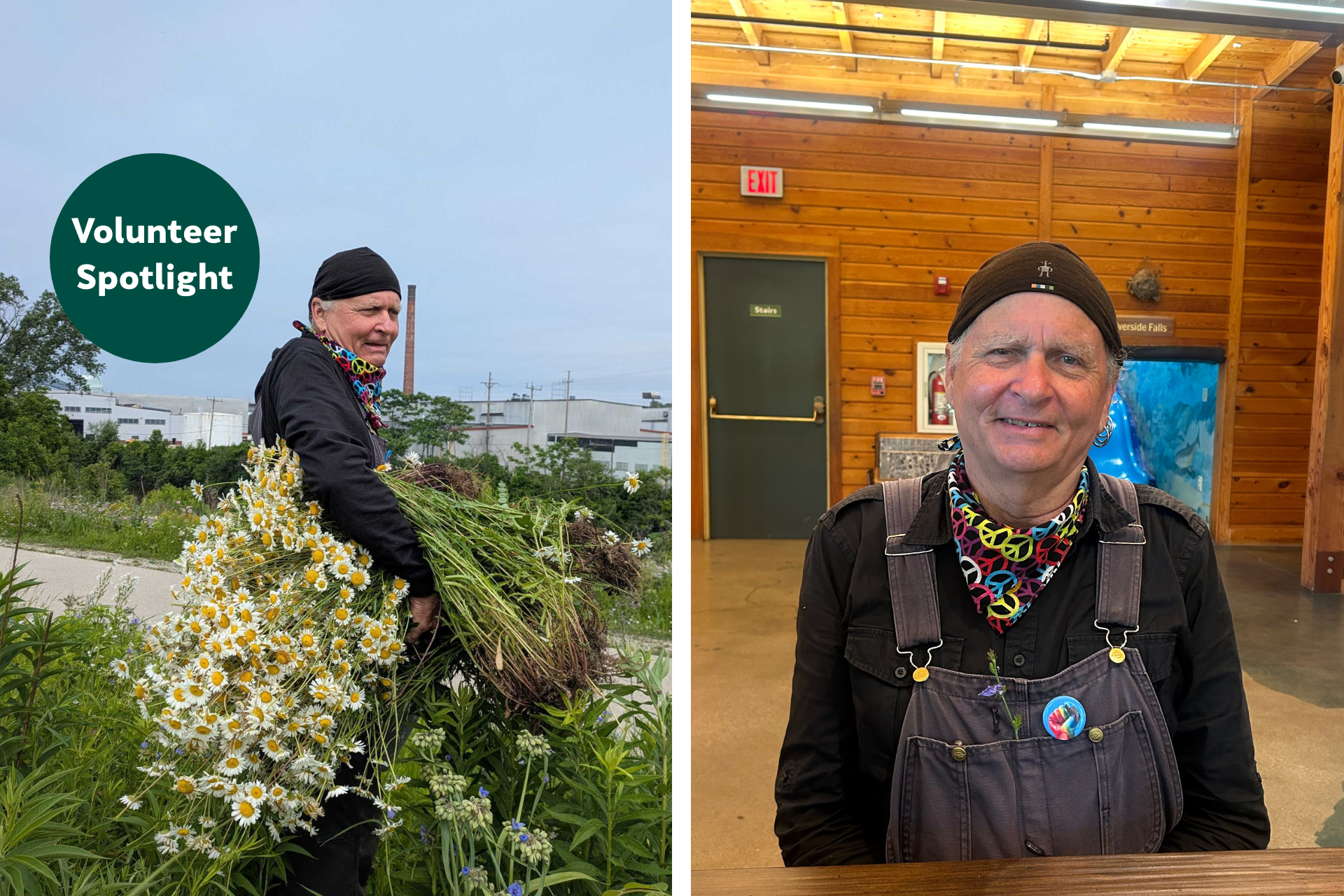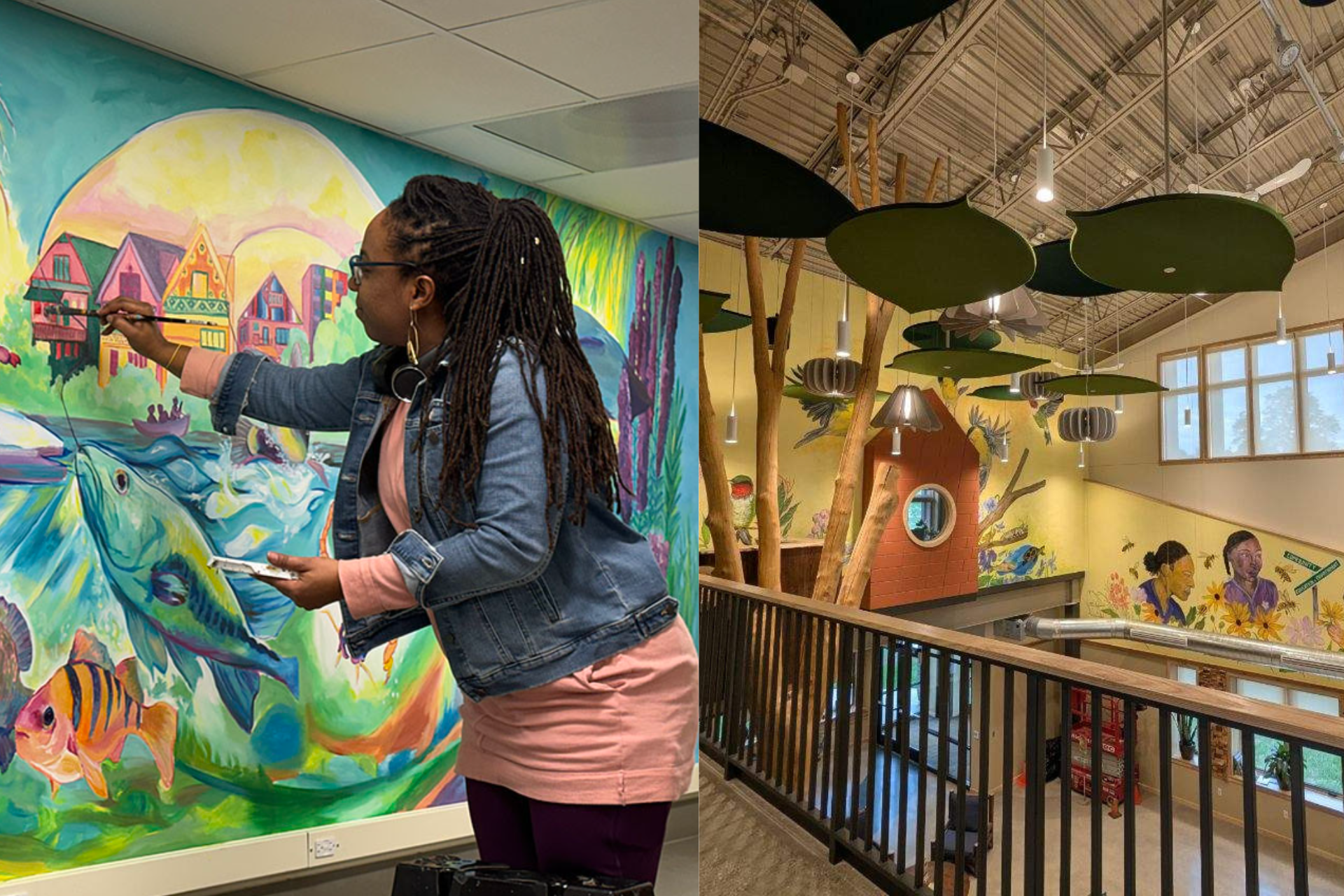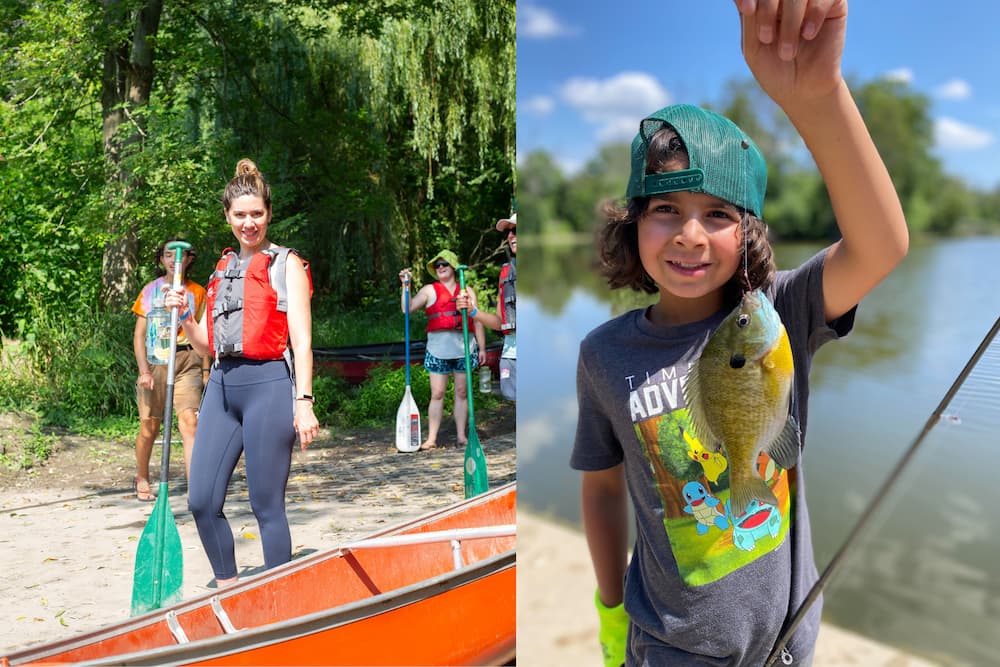Milkweed and Hula Hoops with the UEC’s Summer 2023 Research Intern
This summer, I’ve had the honor not only of joining the Urban Ecology Center’s Research and Community Science (RCS) Department as a Science Communication Intern, but also of working alongside my fellow RCS intern, Cameron Brown, while we show new volunteers how to identify an indigo bunting call or a monarch butterfly egg, or when I tag along to help him feed the UEC’s resident snakes and turtles.
Cameron exemplifies the celebration of the natural world that RCS strives to promote. He’s one of the few people I can think of who will spend his PTO listening to bird calls, start a conversation with “Do you want to know my favorite fact about the American toad?” or say “Can you take a picture?” when someone tells him there’s a wasp in his hair. It was a joy to chat with him recently about the research he completed during his summer with the UEC.
Each summer, RCS completes a milkweed density survey at each of our branches to supplement the data we collect for the Monarch Larva Monitoring Project (MLMP). Per the MLMP protocol, we use what’s known as a transect method: we count the number of common milkweed (Asclepias syriaca) plants within a square meter every five paces along our trails and bike paths. Cameron surveyed milkweed density at our Menomonee Valley branch using another common method, known as a randomized method and then examined the differences between the results of each survey.
First, Cameron would head to an area frequented during our monarch larva monitoring outings. Then, he’d ask a random number generator to give him a number between 1 and 4 that would determine which cardinal direction he’d face: a 1 meant he’d face East, a 2 meant South, and so on. After that, he’d generate one more number, this time between 1 and 10, to decide how much strength he’d use to throw a hula hoop—a 1 meant he’d use the least strength; a 10 meant the most. Because Cameron was completing this particular survey solo, he was able to use a Cameron-specific measurement like toss strength. If he were to adapt his protocol for use by community scientists, he would adjust this element to be more objective.
When the hula hoop landed (some adjustments were made to prevent it from floating away on the Menomonee River), Cameron would count the number of common milkweed plants within the 32” diameter of his sampling tool. After 100 tosses, he tallied up his findings and compared his data to what we’d found when we used the transect method at Menomonee Valley, adjusting for the size of the area within the hula hoop.
The transect method yielded an average of 0.76 milkweed plants per square meter; Cameron’s randomized method yielded 0.18 milkweed plants per square meter. He was surprised by the disparity between results, but he says it was likely caused by the fact that the transect method allows us to stick more closely to areas where our community scientists frequently check milkweed plants for monarch eggs and larvae. For our purposes and those of the Monarch Larva Monitoring Project, Cameron recommended that we continue using the transect method in future years, but he clarified that for broader purposes the randomized method was more precise (“and more fun”).

Cameron told me he was grateful that we were given the freedom to design and implement independent projects during this internship. He was able to figure out a methodology that worked best for him and to use the free time left over to educate himself about Wisconsin ecology. “I think I used my time pretty wisely,” he said.
Cameron grew up in Southfield, Michigan, which is a suburb of Detroit, and he graduated from Michigan State University this May with a degree in Zoology as well as a minor in Linguistics. He plans to attend graduate school beginning next Fall—The University of Wisconsin-Milwaukee is a contender—and to spend the coming year narrowing down his interests within the fields of biology and wildlife genetics.
He told me that task may be easier said than done, because this internship has only managed to broaden his interests. However, I can’t think of a task too daunting for Cameron’s brain, so I just feel lucky that I’ll get to see what he does with it next.
Top photo: Cameron Brown, the UEC’s Summer 2023 Research and Community Science Intern, poses with his sampling tool and a patch of common milkweed in Three Bridges Park. Photo credit: Clare Eigenbrode




.jpg)



.png)
.png)